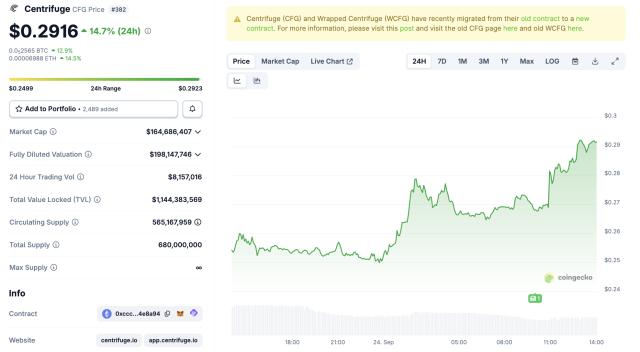"We use a patented data processing and evaluation framework to transform 'available data' into 'actionable signals,' and then use AgentFi to securely and transparently implement strategies into live trading. This isn't just a single function, but an auditable engineering feat." — Jason, CEO of OlaXBT
On September 22, 2025, at Korea Blockchain Week (KBW), OlaXBT CEO Jason officially released the new version of the "OlaXBT Data Layer Whitepaper" in his keynote speech titled "Advancing Crypto Signal Generation: A Patented Framework for Blockchain Data Processing and Evaluation." This whitepaper, centered around a pre-processed, standardized, and verifiable data layer, connects the MCP market (Model-Context-Protocol), deAI autonomous agents, and compliance audit anchors. This whitepaper offers trading teams and institutions faster speed-to-signal, research-to-launch quantitative capabilities, and end-to-end trust and auditability. This patented on-chain data processing and evaluation framework condenses the path from data to execution into a high-speed pipeline that is traceable, verifiable, and controllable.
1. Why Now? — From “Data Deluge” to “Signal Sovereignty”
The crypto market is volatile, narratives shift rapidly, and the fragmentation and high cost of on- and off-chain signals often lead to teams spending 70% of their energy on data collection and cleaning (rather than research and execution). OlaXBT's Data Layer takes care of the heavy lifting for users with its "a priori clean" data products: converging multi-source data, standardizing fields, and performing consistency and traceability checks. The resulting output is "atomic, production-ready" data sets ready for model use, reducing research time from days to minutes.
2. Four Design Tenets (USPs) of the Data Layer
Atomic — Production-Ready
Data pre-processing/standardization/verification can be achieved to achieve atomic-level granularity that can be directly put into production, eliminating the need for tedious cleaning and verification processes.
Velocity — Speed-to-Signal
Designed for low-latency retrieval, it shortens the time from question to insight; internal evaluation shows faster retrieval and cleaner signals.
Quant — Built for Research & Execution
Provides a consistent environment for backtesting, strategy simulation, and on-chain deployment; SDK (Python/Rust/Solidity) and declarative query allow for direct research execution.
Trust — Security & Auditability
ZK proofs ensure that the aggregation process is verifiable, FHE supports encrypted computation, and anchored audits maintain traceability and compliance metrics.
3. Patented Methodology: From a Sea of Indicators to Model Readiness
The white paper disclosed that OlaXBT's patented technology performs indicator screening, true and false positive classification, gradient and buffer calibration on on-chain data and trading signals, and refines multimodal inputs (technical aspects, on-chain behavior, macro/narrative, token fundamentals, portfolio exposure, quantitative construction signals) into trainable/backtestable model-level features.
Process coverage : Multi-source collection → Normalization → Consistency verification → Simulation evaluation/ranking → Metadata and noise estimation → Declarative search.
Factor Families
1) Macro and Market, 2) On-chain Indicators, 3) Technicals and Token Information, 4) Sentiment and Narrative, 5) Portfolio Exposure, 6) Quantitative Strategy Signals—all delivered through a consistent pipeline that outputs extractable and reproducible signals.
4. deAI Ecosystem: MCP × AgentFi, Turning “Signals” into “Executions”
Data Layer → MCP (Protocol Orchestration) → deAI Agents (Execution) form a self-reinforcing flywheel:
This data is further fed into a configurable Agent-as-a-Service (driven by reinforcement learning) for automated execution in scenarios such as market making, risk control, rebalancing, and narrative trading. Execution results are fed back to the data layer, forming a closed-loop learning loop. Privacy and compliance are fully addressed through ZK/FHE and anchored auditing.
5. Regulatory Implementation for Institutions: From Market Making to Audit Anchoring
Iterate market making and risk control: Use a unified data layer to support multi-market market making, factor exposure and term structure management, and align research hypotheses with intraday behavior.
Audit anchoring and transparency indicators: Data/process hashing and on-chain anchoring, public freshness indicators, support for external review and audit spot checks.
Privacy computing: FHE allows for investment group analysis and risk aggregation without decryption, meeting the dual requirements of penetration and confidentiality.
6. Productization and Business Model: Tiered Deposit and Withdrawal, Token Economy, and Ecosystem Profit Sharing
Access tiers: Open (batches/slightly delayed), Professional (staking speed-up), Institutional (customized collections/capacity quotas).
Pull billing: pricing based on request volume and immediacy;
Ecological profit sharing: The profits generated by protocol expansion and joint optimization are distributed according to the mechanism and linked to the utility of tokens.
About OlaXBT Data Layer
The OlaXBT Data Layer is the core infrastructure of the deAI ecosystem. It transforms multi-source on-chain and off-chain data into model-ready signals through pre-processing, standardization, and verifiability. It natively integrates with the MCP Marketplace and deAI Agents, forming a closed loop of "data → protocol orchestration → strategy execution → performance feedback." Its four pillars encompass: Atomic (Production-Ready), Velocity (Speed-to-Signal), Quant (Research-to-Execution Consistent Environment), and Trust (ZK/FHE, Anchor Audit). The data layer reduces search time by approximately 25% and data preparation workload by 70–80%, allowing teams to shift their time from cleanup to strategy development. Through declarative queries and SDKs (Python/Rust/Solidity), researchers can now plug and play into tasks such as market making, risk management, and rebalancing, continuously optimizing strategy quality in a compliant and traceable manner.







